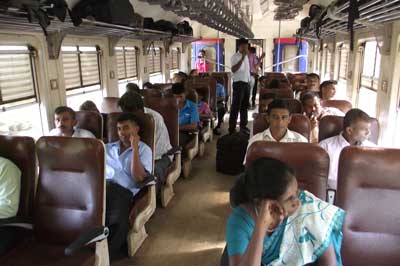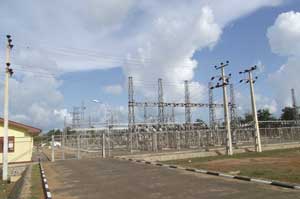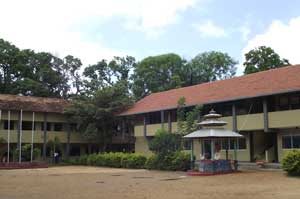.gif)
Culturally Colorful South Africa the Land of Rainbows
Monday , 25th November 2013
By Srimal Fernando

South
Africans call their beloved nation the “Land
of Rainbows”. This great homeland of the South Africans is a magnificent landscape in Africa to
visit for its contrasts, high cultural interest and for its spectacular natural
atmosphere. In history, its size South Africa is a world of its own. As one of
the populous countries in Africa, this county plays an important role in
politics, socio- cultural and in commerce throughout the continent contributing
towards prosperity. The cultural aspect of South Africa is one that comes with
a great story with its ancient history and strong traditions.
The
country knows the lessons of its past all too well. One of the
towering figures of the twentieth century the anti –apartheid revolutionary
leader Nelson Mandela credited for
molding the great nation was elected as the first black President of South
Africa. The iconic leader is often
referred to by his clan as “ Madiba,” or “Father” had endured 26 years of imprisonment in his
fight to end apartheid. He won the Nobel Peace Prize in 1993 for
his efforts to introduce democracy to South Africa and has become a worldwide
symbol of hope and endurance. Thus in a space of little more than a decade after
“ Madiba,” became President , Jacob Zuma was elected as the President of
South Africa in 2009. “God Bless Africa” ( Nikosi
Sikelel iAfrika ) and the “Call Of South Africa” (Die Stem van Suid-Afrika ) hybrid song combining new English
lyrics was the noteworthy
inspirational national anthem adopted
by the
countryman since 1997 . The true spirit of the country's
culture is reflected in the South African
flag .Today
twenty years after the fully
representative multicultural elections were
held in South Africa ,it is a cradle of
democracy and continues to foster
greater understanding among its 53
million population.
The cosmopolitan
cities such as Johannesburg
,Cape Town ,Bloemfontein , Pretoria
with full of traffic and crowds and changing sky lines are occupied by various corporate entities. Western styles have become increasingly popular in
big cities .Latest fashion are put on
display in numerous specialty shops in Cape
Town
, Durban and in Johannesburg
.The country provides some of the best-value tourist vacations
in Africa .The country possesses an enormous beautiful and
historic sites with uncountable
attractions to see and offers an unmatched experience to the travelers. As one of the populous places the coastal towns of Hermanus, Cape Town,
Knysna and Durban are unique scenic
destinations that offer the visitors an exhausting list of attractions. The
other noteworthy historical sights visitors can see in this charming country are Robben Island , Soweto
,Wild Coast .The two million
hectares Kruger
National Park with sixteen ecosystems, Blyde River
Canyon Nature Reserve,Garden
Route are
arguably some of the picturesque tourist
destinations in the country. Cape Town
,Cape Peninsula
, Cape Winelands and Garden
Route
are some of the prominent places of attractions that appeal to many visitors
from all parts of the world.
South
Africans are excellent sportsman . The most popular spectator sports in South
Africa today are Soccer, Rugby and Cricket . South African national Rugby team
“The Springboks,” and the Cricket
team has had the privilege and honour
of being at the forefront in the Global sporting arena. The music, art, literature and cultural practices of the
country have provoked attention and admiration throughout the world. Film industry in South Africa has seen the production of
internationally recognized movies and the rise of actors, actresses and writers. Afrikaans
music is currently one of the most popular and best selling industries in the
South African music scene. The contrasting influences of the African, European
and Asian heritages create a variety of influences throughout the music, dance,
arts and crafts of South Africa.
Source Daily Mirror
Today's Special
Culturally Colorful South Africa the Land of Rainbows



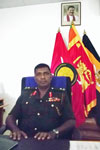




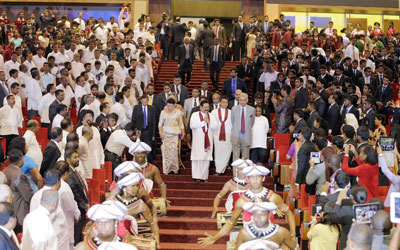
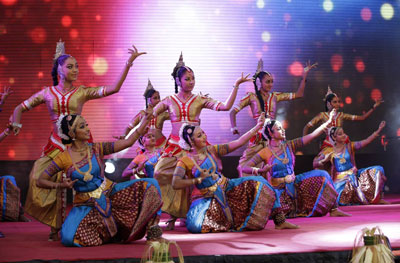

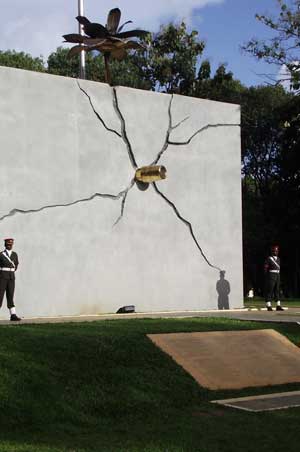

 T. Parama Sivan Siva Ex combatant said, “I feel very happy about the current situation. I see development in my area.”
T. Parama Sivan Siva Ex combatant said, “I feel very happy about the current situation. I see development in my area.”

